The first decade of the twentieth century was an important one; setting the direction in which gunmakers would travel during the new century.
The stalker had several options for taking on red deer and we shall examine some of them here.
The Farquharson single-shot, falling-block.
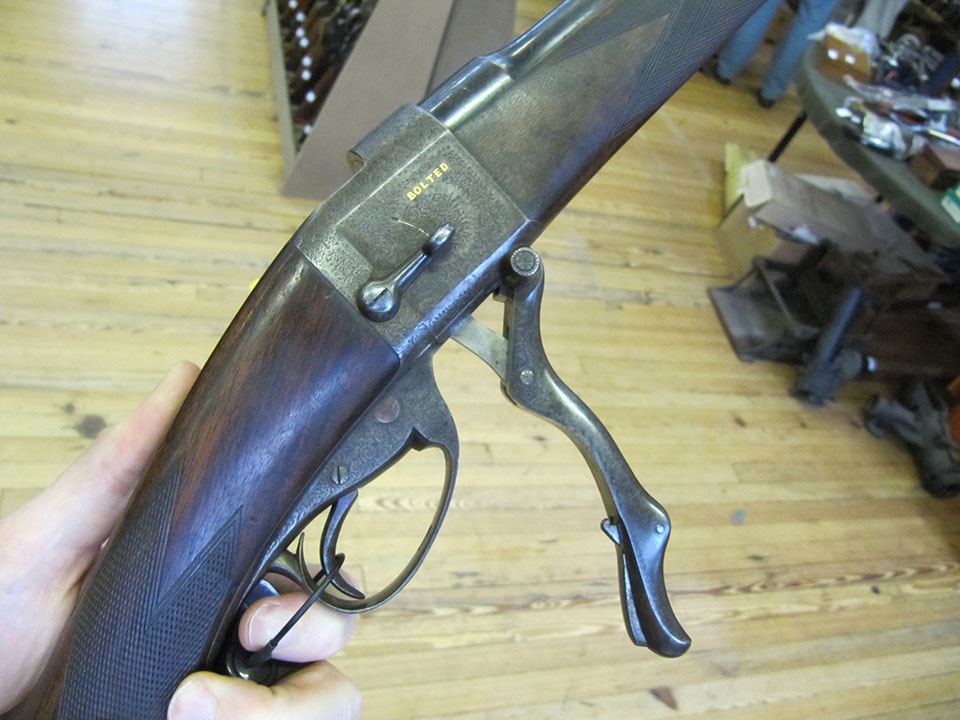
The Farquharson was the last in a distinguished line of single shot stalking rifles, which can be traced back to the 1865 Alex Henry falling-block, hammer rifle.
The Farquharson at this time was a slightly modified version of the original. W.J Jeffery sold a .303 or .256 Mannlicher chambered model for medium game, like red stags.
These rifles were very strongly constructed, with an internal hammer. A robust lever under the guard is thrust forward to cock the hammer, while dropping the breech block and extracting the empty brass case.
With breech open the bore could be cleaned easily. Metford rifling gave way to Enfield rifling and the cartridges were loaded with Cordite.
Though designed for black powder and originally popular in .450 or .500 BPE, these Cordite, smaller calibre versions of the Farquharson are beautifully engineered and capable rifles. In best quality, they cost £15. 15s 0d. This made them a little more expensive than the rival bolt-actions.
The Mannlicher-Schonauer bolt-action with rotary magazine.

A best quality example cost £12.12 s.0d. The Mannlicher-Schonauer was novel then, with its revolving magazine, accepting five cartridges, which could be loaded singly or from a clip.
The rifle was available as a take-down or as a fully-stocked ‘stuzen’ with a 19” barrel.
The distinctive ‘butterknife’ bolt and smooth bolt-action are addictive and the long, pencil-like bullets penetrate very well and are proven killers. Bell even rated them highly (as solids) for shooting elephants! A best model in 1910 cost £12.12.0d. Old catalogues are full of praise and recommendations from sportsmen attesting to the effectiveness of this rifle on oryx, kudu and zebra. Unfortunately, and somewhat ridiculously, it just falls short of today’s legal requirements for shooting red deer.
The Mauser bolt-action with box magazine.
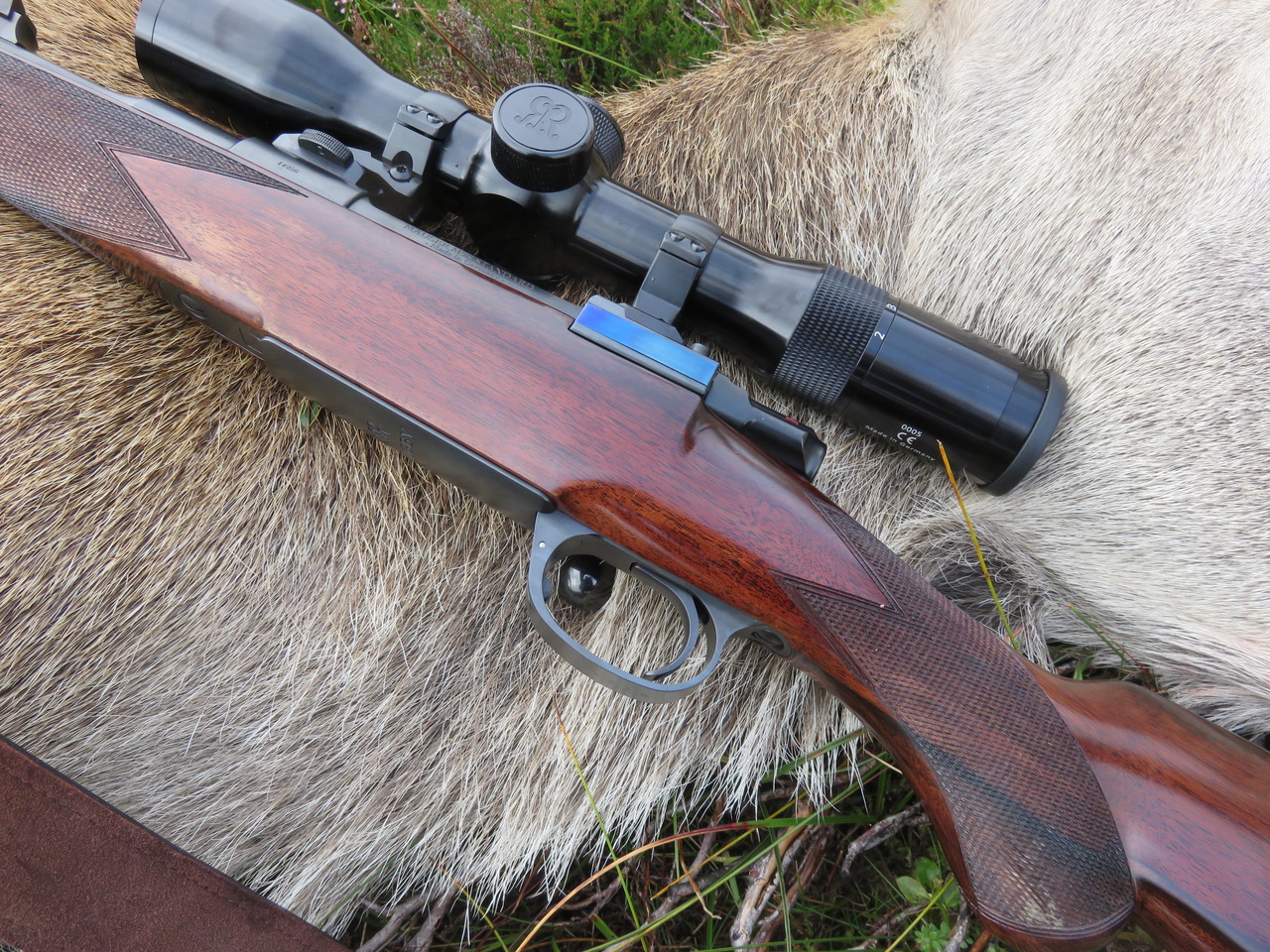
The Mauser ’98 was a hit in the Boer War of 1905 and proved the rifle and cartridge combination to be very effective. Civilian versions rapidly proliferated. Rigby, Jeffery and other makers dod good business selling their rifles, which were often teamed with Lyman sights or telescopic sights to increase effective range.
The simple, robust, bolt action, light weight and flat-shooting characteristics made it popular. The other advantage of a bolt-rifle is the ability to re-load and fire repeated shots reasonably quickly, compared to the slower process involved with a falling-block rifle. Prices for a best finish model were the same as the equivalent Mannlicher, at £12,12.0d.
The Lee-Speed bolt action with box magazine.
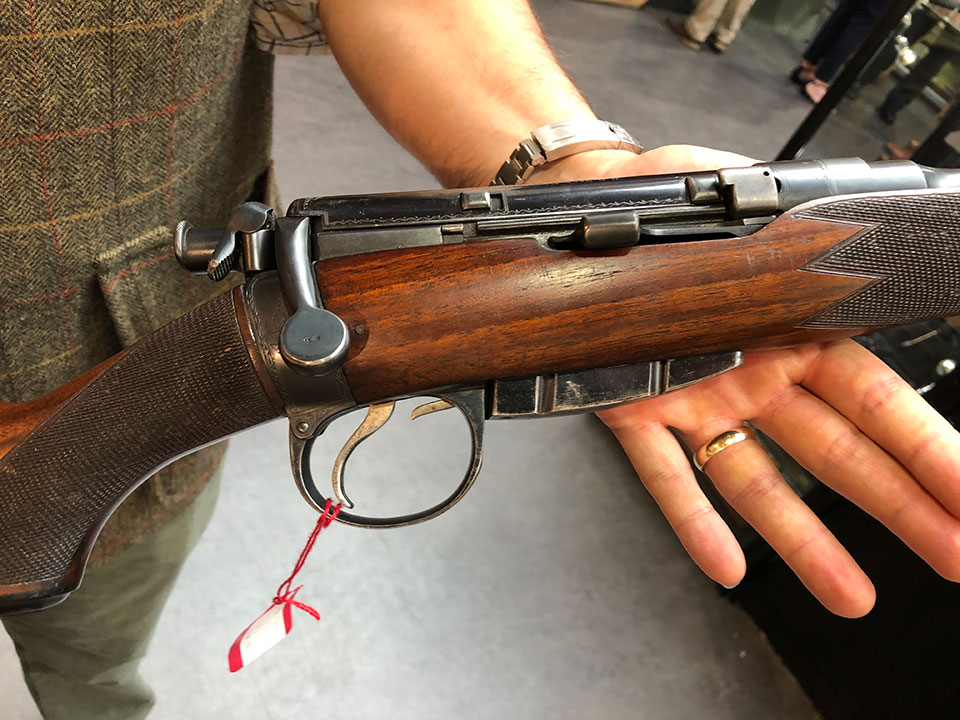
The Lee-Speed was a civilian version of the military Lee-Enfield. One maker claimed the Mauser to be ‘superior to the Lee Enfield from every point of view; the bolt action is far stronger and simpler.’
This has become received wisdom in rifle building circles but it can be effectively challenged and when using cartridges of this, medium, calibre, the Lee Speed has ample strength. The rifles built for sporting purposes and sold by makers like Pape, BSA and Jeffery, are handy, attractive and purposeful rifles. The short throw of the Lee action makes it faster to cycle than the Mauser or the Mannlicher. It also has a ten-shot magazine, twice the capacity of its rivals.
The only real advantage of the continental rifles was the flatter-shooting ammunition. They are also slimmer and better looking, more sophisticated platforms for high quality rifle building. However, let us not forget at all these actions saw war service and we all know which came out of two world wars on the wining side!
Ammunition: .256, .275 or .303?
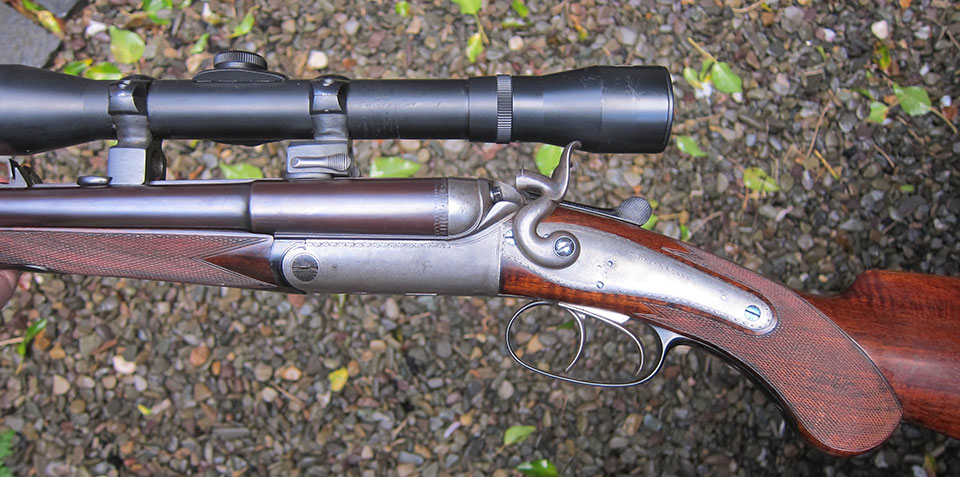
In 1910, the three cartridges were competing with one another directly in the catalogues of Britain’s sporting rifle makers. The .303 had the advantage of being available anywhere there was a British presence, as it was the service rifle cartridge. However, in India service calibres were banned for civilian use so, alternatives were required. The .470 replaced the .450 and the .315 replaced the .303.
The continental cartridges, designed for the new bolt-rifles, were the 7x57mm (re-named .275 for the British market) and 6.5x54mm (re-named .256 for the British market). They both had flatter trajectories than the .303 and at the tie were considered capable of killing bison, elephant and rhino, though not necessarily recommended for big game.
We must remember that in 1910 cordite was a novelty and many sportsmen were used to black powder, which is much less powerful. The new rifles could produce accurate kills at 300 yards, compared to the 150 yards of a larger black powder express rifle. It is safe to say some sportsmen stretched the bounds of these new cartridges by tackling elephants with what we consider a deer cartridge today.
History has taught us that the bolt actions won the battle of public opinion. The Mauser is probably the outright winner, still being the favoured platform for most custom rifle builders and many commercial makers. On the vintage market, the values also tell the tale.
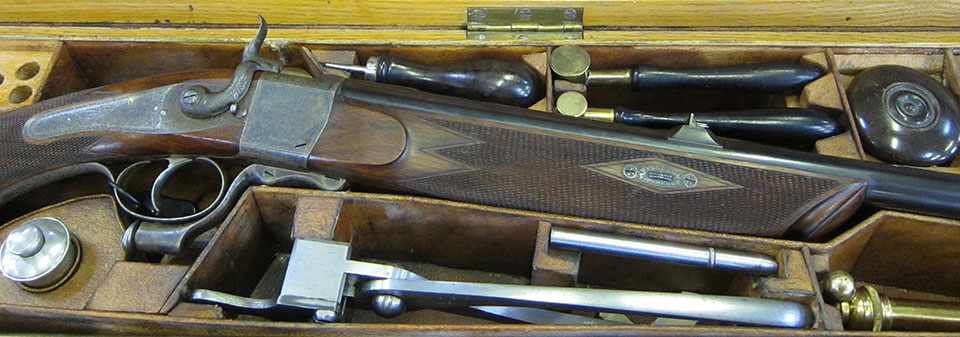
A very good Rigby Mauser will cost five or six thousand pounds, while a good Mannlicher-Schonaur can be had for £1,200 and a first class Lee Speed may cost as little a s £800. Very few builders now make single shot Farquharson type stalking rifles and if you can find a very good vintage example, it will be a higher class of rifle than the bolt-actions. Budget around £3,000.
Given the choice, were I forced to choose just one; give me a best quality Farquharson in .275, if you can find one. That delivers the best hand-built quality, coupled with the flat trajectory of the 7x57 and readily available ammunition, along with modern legally-compliant performance for Scottish red stags. As for the slow second shot, I can live with that but I have found that , with practice, re-loading a falling block rifle can be pretty rapid and if you only have one shot, you perhaps make very sure of your confidence before squeezing that trigger.
Published by Vintage Guns Ltd on




